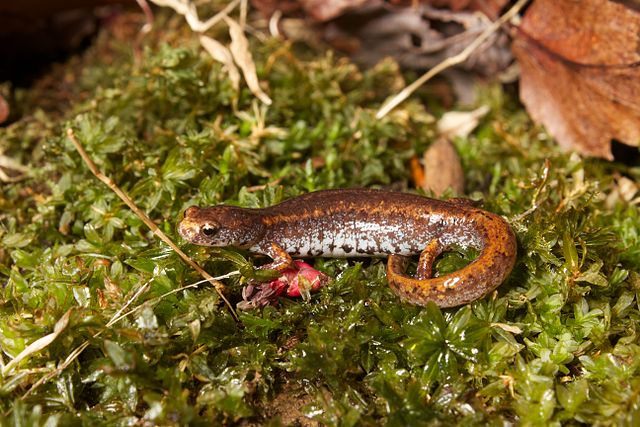 Hemidactylium scutatum. This image is licensed under the Creative Commons Attribution-Share Alike 3.0 Unported license.
Hemidactylium scutatum. This image is licensed under the Creative Commons Attribution-Share Alike 3.0 Unported license.
Natural History
This species is generally uncommon, and populations tend to be localized. They inhabit moist deciduous woodlands usually near creeks, sphagnum seepages, bogs or boggy ponds. Four-toed Salamanders are usually found under logs or other debris. Hibernation occurs in rotting logs, beneath leaf litter, or below ground. Many may congregate in a suitable area.
Reproduction and Growth
Courtship and mating occur in late summer and fall. The females migrate to breeding sites from late March-June. During this season, they seek woodland ponds or creeks where mosses, rotting logs, leaf litter, or grass are by the water. Sphagnum moss over shallow, permanent or semi-permanent water appears to be favored where available. Female deposits 15-70 eggs in the nest. They moisten their eggs through skin secretions. Frequently, two or more females lay eggs in communal nests, but only one female at a time attends the nest. Larvae hatch in 1-2 months. Metamorphosis occurs within 3-8 weeks. Sexual maturity is reached in the third year.
Conservation
Populations are often restricted to isolated colonies. The chance for dispersal into new habitats may be very limited. This species is vulnerable to the effects of human activities.
Habitat Type
Ephemeral wetlands
Permanent wetlands
Forests
